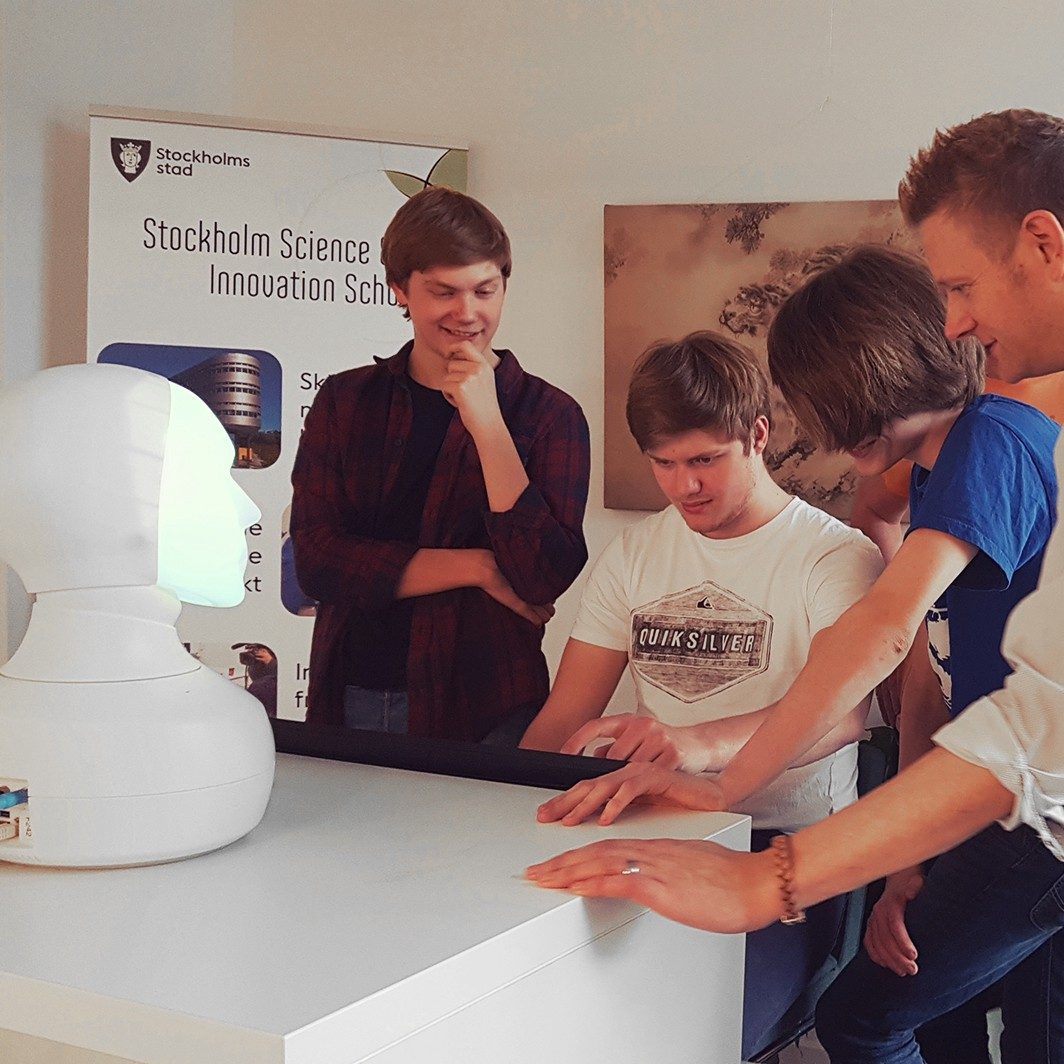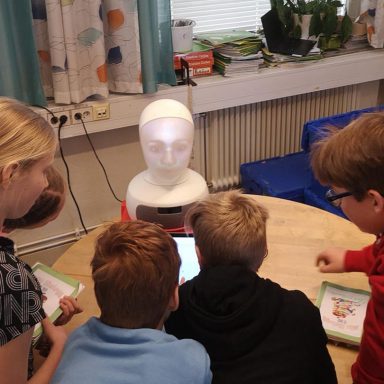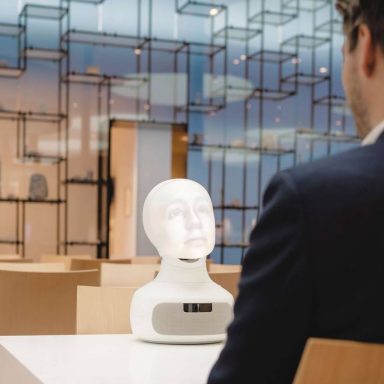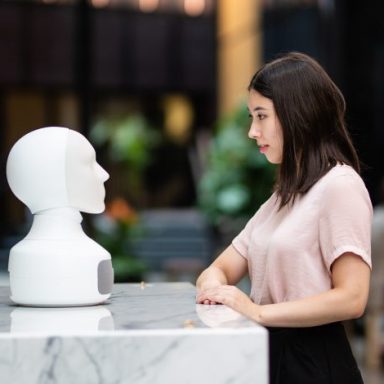We recently conducted a project with the City of Stockholm to test social robots in classrooms in collaboration with teachers and students. This is a ground-breaking move for social robots — one which we hope will be commonplace within the next few years.
We believe that social robots — and Furhat in particular — belong in every classroom. And there is nothing more satisfying than being able to take the first concrete steps in our hometown Stockholm — assuring us that we are in the right place to build a great new technology focused on society’s well-being.
Since we started Furhat — which itself came out of an educational institution— social robots for education has been an area which lies close to our hearts. Education is the very foundation of our company; without it we wouldn’t exist. And it is at the very core of our vision for the future. Our partnership with Stockholm City is a first step towards our long-term dream of “one robot per student”.
Making a change in education is difficult and slow, and it should be — but we believe the investment will be incredibly rewarding in the long run. Social robots, used as an educational tool, can enhance the entire educational experience for students: robots can boost collaboration between students, support teachers, increase engagement, help with cultural integration, and encourage creativity.
Placing robots in classrooms obviously raises several concerns. These concerns are amplified by the multitude of misconceptions about the role of robots in society in general.
Are robots in school going to isolate students and eliminate social interactions? Are they going to replace real, live human teachers? Are we robotizing the school and marginalizing human values?
The answer to all of these questions is “No.” In fact, it’s rather the opposite. We want to clarify all of those points and share our vision of how social robots can contribute to a positive, engaging learning experience.
Children learn best by interacting “live” with the world around them. Babies watch their parents, toddlers play with their toys and each other and model the social interactions they’ve seen. They observe the world and engage socially. By being present and interacting in the physical world, we create a bond, and we engage with the material in a much more meaningful and relatable way than by reading lessons or solving quizzes on a laptop.
In the world of standardized education, for the most part, learning is done through a one-sided monologue when in the classroom, and through using digital tools when away.
Obviously this is an oversimplification. Students do get to partake in group interactions — and occasionally get one-on-one time with the teachers. But unfortunately, this is more of a rarity than the norm. There is a global shortage of teachers, from sub-Saharan Africa to Sweden, and UNESCO predicts that the world will need nearly 69 million new teachers just to reach the 2030 Sustainable Development Goal for inclusive and equitable education for all. Honestly, we need as many teachers — and as many teaching assistants, whether human or robot — as we can get.
At the same time, student engagement is in decline, from Australia to the US. Over 1 million American high school students drop out of school each year — a huge hit to the labor force, the economy, and their own lives.
We, humans, are made to engage. We are most engaged, and most active cognitively, when we are interacting with each other. But for a very long time now, our educational system has moved away from collaborative interaction to an impersonal, one-size-fits-all monologue, where students may never even meet their teachers one-on-one. On top of that, the tools that students use today don’t exactly encourage the same level of engagement and interaction that a human teacher can provide. Where is the social element in plodding away at a keyboard, or staring at a flat screen?
As counterintuitive as it may sound, social robots can help bring the humanity back to education, making it more social.
Students can speak to a social robot, and the robot can listen and respond. It has a face, a voice, expressions. It interacts with the student using language. It gives signs of empathy. It’s a much more intuitive process, an interaction similar to the way a child would interact with a teacher or a friend.
 A student testing Furhat at the SETT education fair with Stockholm City in April.
A student testing Furhat at the SETT education fair with Stockholm City in April.
 Students at the Stockholm Science and Innovation School working with Furhat.
Students at the Stockholm Science and Innovation School working with Furhat.
Social robots can assist teachers, giving more students access to a responsive mentor of sorts. Rather than isolating students, having them stare at a book or a touch-screen, a social robot gives them a physical, social, emotional interface to interact with.
And research shows that this isn’t just our pipe dream; it is reality. There are plenty of studies showing that social robots are an effective learning tool. Children find robots highly engaging — even to the extent of increasing the number of female students who stay interested in STEM fields. And our own recent work at the Royal Institute of Technology (KTH) in Stockholm shows that a robot with a physical presence in the classroom is significantly more effective than an animated avatar or a disembodied voice (such as on a smart speaker) at teaching students a new language.
It turns out that the physical presence of the robot — as opposed to just being shown on a computer screen or having a voice — triggers cognitive effects in the brain that enhance attention, memory, and learning. Imagine each student having their own personal companion to study with them at school and at home, practice languages, have roundtable discussions, and assist in their learning in every way.
In fact, social robots for education has been a topic of research and investigation by many. According to a review published in the Science Robotics publication last year, “Robots can free up precious time for human teachers, allowing the teacher to focus on what people still do best: providing a comprehensive, empathic, and rewarding educational experience.”
With a revolutionary learning tool which works so well, the question we want to ask isn’t why we would use it, but why would we not use it?
We are not on a mission to replace teachers with robots — nor do we believe that will ever happen. What we do believe in is the power of social robots to enhance education and improve learning, bringing back elements of social interaction, engagement and compassion back to education.
We believe it’s time for a revolution in our schools — a revolution where education becomes more personalized, more accessible, more engaging, and even more human. Thanks to social robots. Our collaboration with Stockholm Stad is just the first step on this journey. We’re looking forward to the rest of it!






